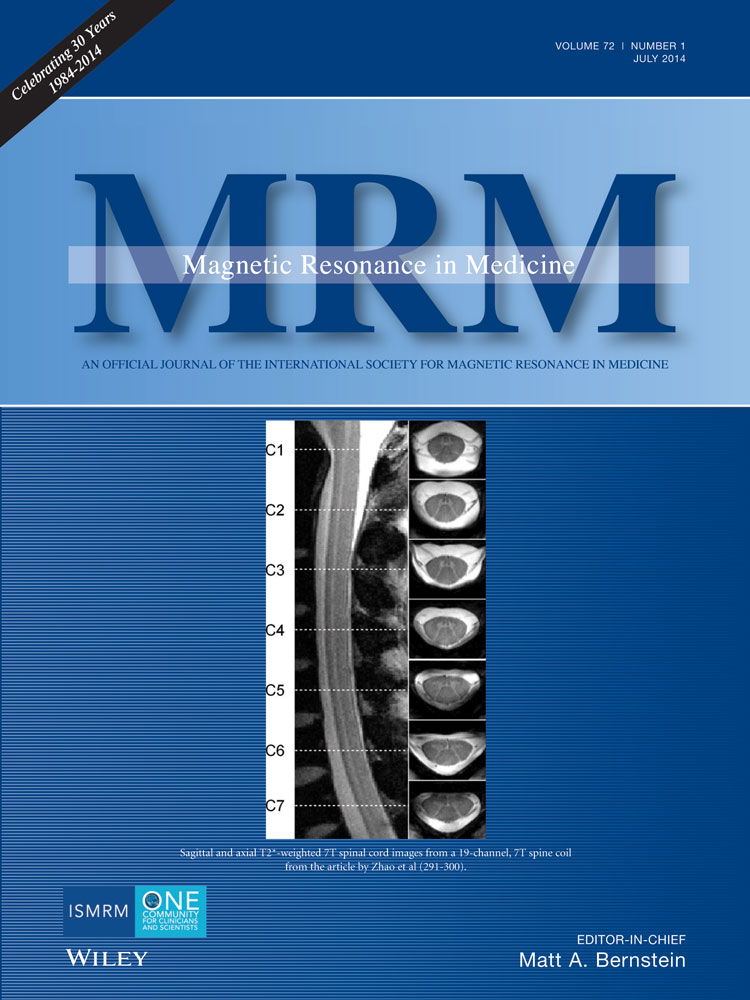Local shape adaptation for curved slice selection
Abstract
Purpose
Nonlinear spatial encoding magnetic fields allow excitation and geometrically matched local encoding of curved slices. However, the nonlinearity of the fields results in a varying slice thickness. Within this study, the technique is combined with multidimensional RF excitation for local adaptation of the slice shape.
Theory
A framework originally developed for nonlinear receive encoding is applied to multidimensional excitation with nonlinear spatial encoding magnetic fields for determination of dedicated target patterns and combined with a model for assessment of minimum transmit-resolution requirements for the design of efficient transmit k-space trajectories.
Methods
Cross-sections of curved slices acquired in a phantom with both locally adapted slice thickness and curvature are evaluated. In addition, resulting voxel shapes are analyzed to investigate the range of applicability of the technique. Finally, slice-thickness adaptation is applied to in vivo curved slice imaging.
Results
Local adaptation of the slice thickness is feasible both in phantom and in vivo. The technique further allows local adaptation of the slice curvature. However, its range of applicability is limited by prolonged pulse duration and voxel shape distortion.
Conclusion
Multidimensional excitation allows imaging of curved slices with constant thickness. It also has the potential for further modification of the slice shape for increased ability to adapt to the anatomy. Magn Reson Med 72:112–123, 2014. © 2013 Wiley Periodicals, Inc.




